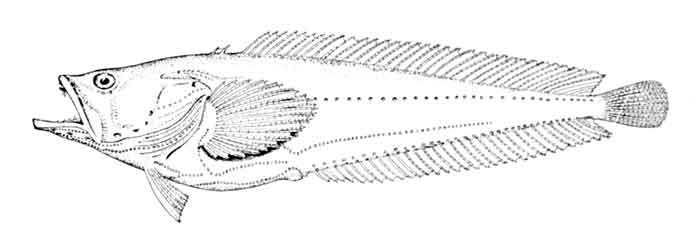Superregnum: Eukaryota
Cladus: Unikonta
Cladus: Opisthokonta
Cladus: Holozoa
Regnum: Animalia
Subregnum: Eumetazoa
Cladus: Bilateria
Cladus: Nephrozoa
Superphylum: Deuterostomia
Phylum: Chordata
Subphylum: Vertebrata
Infraphylum: Gnathostomata
Megaclassis: Osteichthyes
Superclassis/Classis: Actinopterygii
Classis/Subclassis: Actinopteri
Subclassis/Infraclassis: Neopterygii
Infraclassis: Teleostei
Megacohors: Osteoglossocephalai
Supercohors: Clupeocephala
Cohors: Euteleosteomorpha
Subcohors: Neoteleostei
Infracohors: Eurypterygia
Sectio: Ctenosquamata
Subsectio: Acanthomorphata
Divisio/Superordo: Acanthopterygii
Subdivisio: Percomorphaceae
Series: Batrachoidaria
Ordo: Batrachoidiformes
Familia: Batrachoididae
Subfamilia: Porichthyinae
Genus: Porichthys
Species: P. analis – †P. atalaianus – P. bathoiketes – P. ephippiatus – P. greenei – P. kymosemeum – P. margaritatus – P. mimeticus – P. myriaster – P. notatus – P. oculellus – P. oculofrenum – P. pauciradiatus – P. plectrodon – P. porosissimus
Name
Porichthys Girard, 1854
Gender: masculine
Type species: Porichthys notatus Girard, 1854
Synonyms
Nautopaedium Jordan, 1919

Porichthys porosissimus
References
Girard, C. F. 1854. Enumeration of the species of marine fishes, collected at San Francisco, California, by Dr. C. B. R. Kennerly, naturalist attached to the survey of the Pacific railroad route, under Lieut. A. W. Whipple. Proceedings of the Academy of Natural Sciences of Philadelphia v. 7: 141–142.
Porichthys – Taxon details on Integrated Taxonomic Information System (ITIS).
A midshipman fish is any species of toadfish belonging to the genus Porichthys (in family Batrachoididae). Historically, there have been two common names. Porichthys refers to the well developed pores on the fish, and this led to the common name "Porous Catfish".[3] The other common name, "Midshipman" is based on the pattern of button-like luminous spots (photophores) which resemble the buttons on the uniforms of young naval officers known as midshipmen.[4]
Midshipman fish are distinguished by their photophores and four lateral lines. Typical midshipman fishes, such as the plainfin midshipman (Porichthys notatus), are nocturnal and bury themselves in sand or mud in the intertidal zone during the day, to float just above the seabed at night. Some species have venomous dorsal spines and are capable of inflicting serious injuries if handled.[5]
Description
Male midshipman fish have two morphs: type I and type II. Type I and type II males have different reproductive strategies, and can be distinguished from each other based on physical characteristics. Type I males are eight times larger in body mass, and have much larger vocal organs. Type II males’ reproductive organs are seven times larger in size than those of type I males.[6] Female and type II male midshipman fish can be distinguished from each other by the female's slightly larger size, and the type II male midshipman's large reproductive organs.[7]
Species
Photophores on an Atlantic midshipman. Midshipman fish are named after their photophores.
Extant species
There are currently 14 recognized extant species in this genus:[8]
Porichthys analis C. L. Hubbs & L. P. Schultz, 1939 (Darkedge midshipman)
Porichthys bathoiketes C. R. Gilbert, 1968
Porichthys ephippiatus H. J. Walker & Rosenblatt, 1988 (Saddle midshipman)
Porichthys greenei C. H. Gilbert & Starks, 1904 (Greene's midshipman)
Porichthys kymosemeum C. R. Gilbert, 1968
Porichthys margaritatus (J. Richardson, 1844) (Daisy midshipman)
Porichthys mimeticus H. J. Walker & Rosenblatt, 1988 (Mimetic midshipman)
Porichthys myriaster C. L. Hubbs & L. P. Schultz, 1939 (Specklefin midshipman)
Porichthys notatus Girard, 1854 (Plainfin midshipman)
Porichthys oculellus H. J. Walker & Rosenblatt, 1988 (Smalleye midshipman)
Porichthys oculofrenum C. R. Gilbert, 1968
Porichthys pauciradiatus D. K. Caldwell & M. C. Caldwell, 1963
Porichthys plectrodon D. S. Jordan & C. H. Gilbert, 1882 (Atlantic midshipman)
Porichthys porosissimus (G. Cuvier, 1829)
Fossil species
†Porichthys analis - Early Pliocene Onzole Formation, Ecuador[9]
†Porichthys margaritatus - idem
†Porichthys pedemontanus Robba 1970 - Tortonian Italy[10]
Biology
Atlantic midshipman (Porichthys plectrodon)
Reproduction and vocalization
Main article: Reproduction and vocalization in midshipman fish
Mating in midshipman fishes depends on auditory communication. Male midshipman fish produce several different vocalizations while females only make grunts in non-breeding situations.[6]
References
Sepkoski, Jack (2002). "A compendium of fossil marine animal genera". Bulletins of American Paleontology. 364: 560. Archived from the original on 2011-07-23. Retrieved 2008-01-08.
Eschmeyer, William N.; Fricke, Ron & van der Laan, Richard (eds.). "Porichthys". Catalog of Fishes. California Academy of Sciences. Retrieved 18 July 2018.
Cooper, James Graham; Suckley, George; Cooper, William; Gibbs, George; Gray, Asa; LeConte, John L. (1859). The Natural History of Washington Territory. New York: Bailliere Brothers. p. 356.
Jordan, David S.; Bollman, Charles H. (1889). "Scientific results of explorations by steamer Albatross". Proceedings of the United States National Museum. 12: 149–183.
Lopes-Ferreira, Mônica; Ramos, Anderson Daniel; Martins, Itamar Alves; Lima, Carla; Conceição, Katia; Haddad, Vidal (August 2014). "Clinical manifestations and experimental studies on the spine extract of the toadfish Porichthys porosissimus". Toxicon. 86: 28–39. doi:10.1016/j.toxicon.2014.04.014. PMID 24814010.
Brantley, Richard K.; Bass, Andrew H. (26 April 2010). "Alternative Male Spawning Tactics and Acoustic Signals in the Plainfin Midshipman Fish Porichthys notatus Girard (Teleostei, Batrachoididae)". Ethology. 96 (3): 213–232. doi:10.1111/j.1439-0310.1994.tb01011.x.
Lee, Jonathan S. F.; Bass, Andrew H. (July 2006). "Dimorphic male midshipman fish: reduced sexual selection or sexual selection for reduced characters?". Behavioral Ecology. 17 (4): 670–675. doi:10.1093/beheco/ark015.
Froese, Rainer and Pauly, Daniel, eds. (2012). Species of Porichthys in FishBase. April 2012 version.
Onzole Formation at Fossilworks.org
Porichthys pedemontanus at Fossilworks.org
Retrieved from "http://en.wikipedia.org/"
All text is available under the terms of the GNU Free Documentation License

